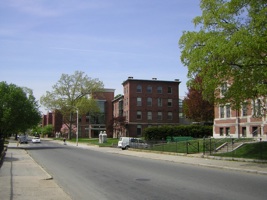The study of collective motions concerns a broad range of scientific domains: Biology, zoology, physics, robotics, anthropology,... The emergence of collective motions in complex systems (school of fishes, flock of sheep, assembly of bacteria,...) induces many questions. Indeed, this emergence do not necessary comes from a simple factor like the presence of a leader or of an external field. The point of view of the physicist can help to understand which fundamental mechanisms leads to collective motions by considering some model systems. In an experimental study made during a sojourn in the laboratory of Arshad Kudrolli at Clark University (nearby Boston), the motion of very simple self-propelled particles has been analyzed. We have observed that, despite of the simplicity of the interactions between the particles, strong collective motions could be observed. In the physics community, an assembly of self-propelled particles is called active material.










We have studied the collective dynamics of vibrated granular rods which have a non-symmetrical mass distribution. This asymmetry is induced by the presence of a metallic mass at one side of the rod. Such a rod on a vibrated horizontal surface moves towards the lighter end. These very simple self-propelled particles are interacting only during collisions. The vibration intensity is characterized by the normalized acceleration Γ which is the ration between the maximum acceleration of the surface Aω2 divided the the gravitational acceleration g. By varying Γ, we can tune the average velocity of the particles.
Sketch of the experimental setup.
Active materials
Clark University, Worcester, Massachusetts, USA
Motion of three particles on the vibrating plate.
As a function of the vibration intensity Γ, different behaviors have been observed. For low Γ, the particles are moving to the wall and get stuck. For high values of the vibration intensities, a strong agitation is observed and the particles are able to flip. Any clear collective motions are observed in this case? However, for intermediate value of Γ, we observe the emergence of vorticity in the system. This vorticity is clearly related to collective motions in the assembly.
The results of this study has been published in «Physical Review Letter» and has been selected to illustrate the cover of the volume.

Resume of a work done in collaboration with Arshad Kudrolli, Dmitri Volfson, and Lev S. Tsimring
G. Lumay
In summary, we have studied the collective dynamics of «self-propelled» polar rods. We observe aggregation of rods at the boundaries because of the inability of rods to turn around and escape for high enough density under low noise conditions. As vibration strength and thus noise is increased, the aggregation reduces and a uniformly distributed state displaying local orientational order and swirls are observed.
